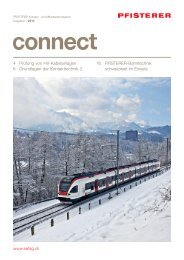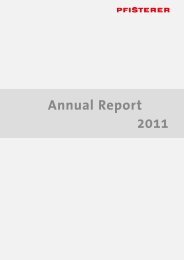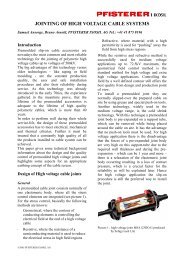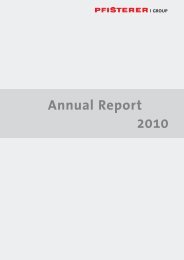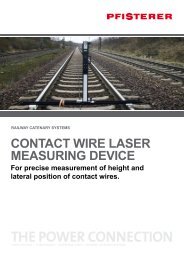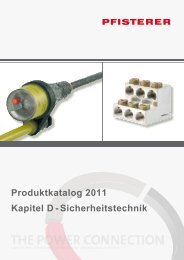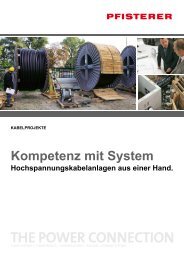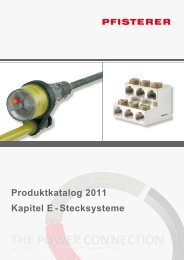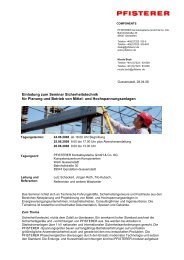Bending of helically twisted cables under variable ... - Pfisterer
Bending of helically twisted cables under variable ... - Pfisterer
Bending of helically twisted cables under variable ... - Pfisterer
You also want an ePaper? Increase the reach of your titles
YUMPU automatically turns print PDFs into web optimized ePapers that Google loves.
21<br />
The above equation is also applied for wires in a cable configuration that are subject to bending<br />
[Isaachsen, 1907, Ernst, 1933, Wyss, 1956, Schiffner, 1986, Wang, 1990]. The main prerequisites are<br />
that the cross-sections <strong>of</strong> the individual wires remain plane during bending and that the material <strong>of</strong> the<br />
wire is linear elastic, following Hooke’s law. The first had already been experimentally observed earlier<br />
[Czitary, 1962]. The second assumption was met by suitable selection <strong>of</strong> the external loads.<br />
<strong>Bending</strong> stiffness<br />
It is known that the moment in the specific support cross-section is proportional to the curvature <strong>of</strong> the<br />
cross-sectional axis at that position. The proportionality factor is (EJ), also called bending stiffness or<br />
just stiffness, as opposed to elongation stiffness. The stiffness is easy to calculate for a homogeneous<br />
body with known Young’s modulus, which also yields the distortion as a result <strong>of</strong> external loads. The<br />
conditions in a cable are different since in this case the individual wires are not permanently fixed in<br />
position but, depending on the load, may change position relative to each other.<br />
To determine the stiffness <strong>of</strong> a cable, it is therefore necessary to know the internal state <strong>of</strong> displacement<br />
in the cable, as already described and quantified in Section 2.3.<br />
Wire and secondary stiffness<br />
As is known from the strength <strong>of</strong> materials, the bending curve is determined by considering the balance<br />
<strong>of</strong> moments in each cross-section <strong>of</strong> the considered support, by equating the external stress moment M<br />
to the internal moment, calculated from the normal stresses acting on each position <strong>of</strong> the considered<br />
cross-section. In case <strong>of</strong> a “component” cross-section as in a <strong>helically</strong> <strong>twisted</strong> cable, the external<br />
moment M is for this purpose distributed over the individual cross-sectional components <strong>of</strong> the cable,<br />
i.e. the individual layer wires (Md,L) and the core wire (MK), Fig. 2.12.



